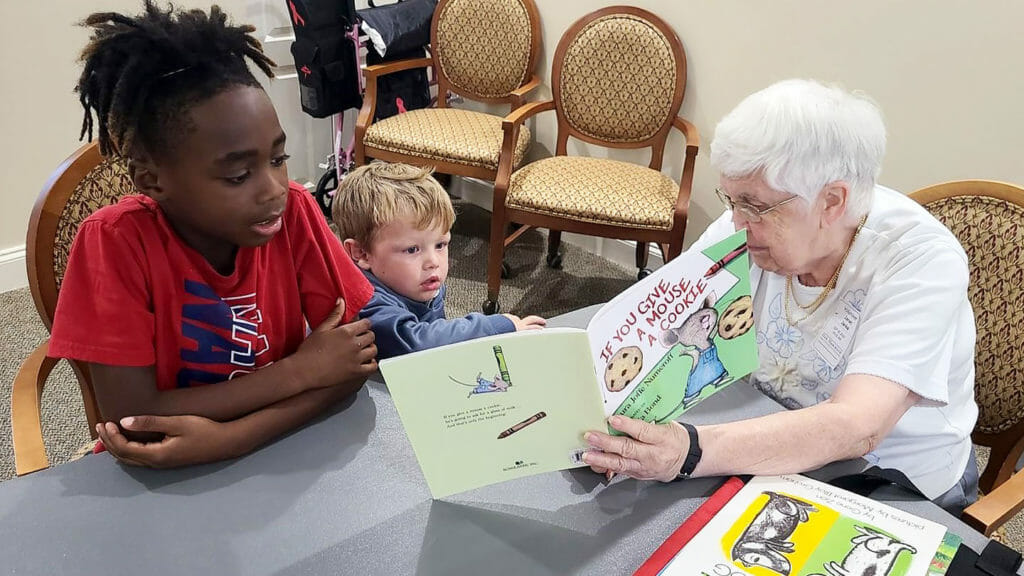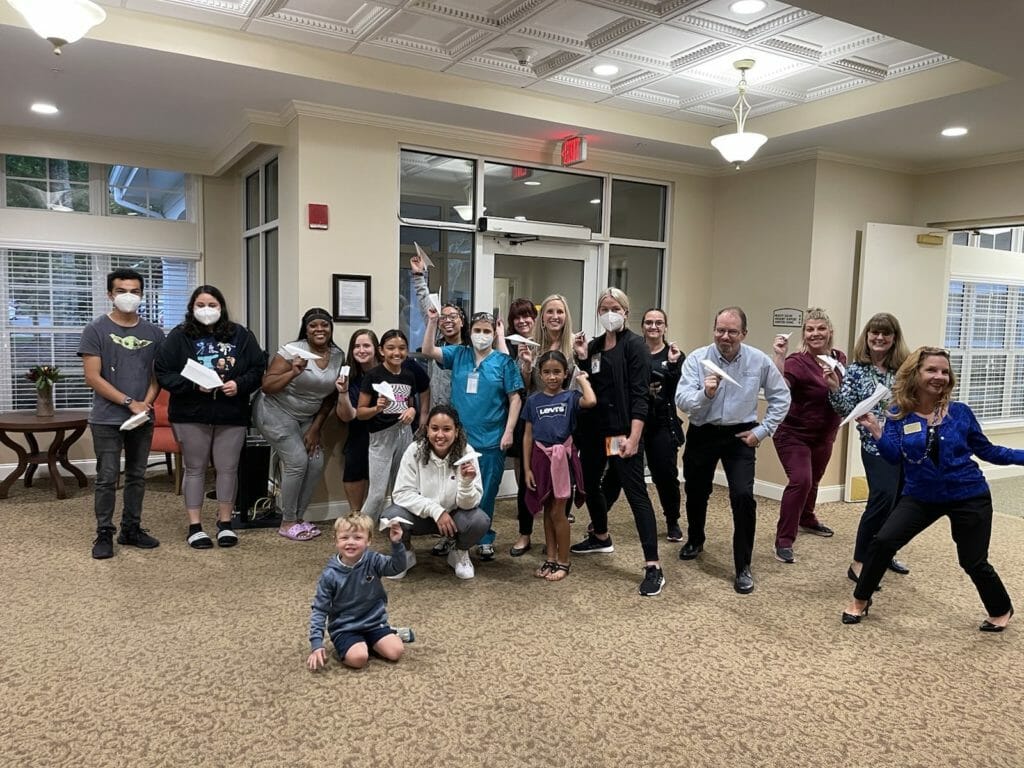
Senior living providers in high-risk areas have coordinated resident evacuations and struggled with power outages as Hurricane Ian moved through Florida, whereas those in areas spared by the storm have opened their doors to displaced others’ residents and staff members.
President Biden described Hurricane Ian — which made landfall Wednesday in Florida as a Category 4 major hurricane — as the “deadliest storm” in the state’s history, adding that early reports indicated “substantial loss of life.”
“We’ve never seen storm surge of this magnitude,” Florida Gov. Ron DeSantis (R) said Thursday morning during a news conference. The amount of water that’s been rising, and will likely continue to rise today even as the storm is passing, is basically a 500-year flooding event.”
Providers in Georgia, the Carolinas and Virginia were watching the storm, which was downgraded to Tropical Storm Ian on Thursday afternoon. The storm was expected to reintensify over the Atlantic Ocean to a Category 1 hurricane before making landfall in South Carolina on Friday afternoon.
Ian made landfall as one of the strongest hurricanes ever to hit the United States, flooding homes on both coasts and knocking out electricity to more than 2.5 million, according to the Associated Press. On a Florida Agency for Health Care Administration update call with FHCA members on Thursday afternoon, a TECO Energy representative said that 13 assisted living communities and two nursing homes were without power Thursday afternoon, but noted they either had generators or had evacuated residents.
As of Thursday morning, generators were operating and the “damage, thankfully, has been minimal,” according to Florida Health Care Association Senior Director of Strategy & Communications Kristen Knapp.
“We are still watching the central/east coast as the storm moves through and the potential for flooding is the most concerning,” Knapp told McKnight’s Senior Living. “Facilities will work with their local emergency managers if there are immediate concerns, since all emergencies are local and that is the most effective way to get critical needs met.”
Florida Assisted Living Association CEO Veronica Catoe told McKnight’s Senior Living that FALA is communicating with its members affected by the storm and is providing resources and support.
“Facilities are working with emergency management agencies, as well as their local partners and staff, to ensure that operations return to normal as soon and as safely as possible,” Catoe said.
During the update call Thursday afternoon, Florida AHCA Deputy Secretary for Health Quality Assurance Kim Smoak said that the agency planned to begin post-assessment visits at assisted living communities and nursing homes in affected counties on Thursday. Florida AHCA is partnering with the Florida Department of Health Medical Quality Assurance teams and the Medicaid Fraud Control Unit of the Florida Attorney General’s Office to complete those visits.
Communities on the move
Almost 6,900 assisted living and nursing homes residents from 150 facilities were evacuated from their homes and into other facilities ahead of Hurricane Ian’s arrival, according to Florida Politics. Specifically, 91 assisted living communities evacuated 3,012 residents, according to Florida AHCA, which gathered data from self-reported transfers in the Health Facility Reporting System.
FHCA Senior Director of Quality Affairs Deborah Franklin stressed that evacuated facilities must work with their local emergency management offices to obtain clearance before returning evacuated residents and staff to a facility.
Several Erickson Senior Living continuing care retirement communities posted on their websites that they had taken the necessary precautions to be “fully prepared” for the hurricane. Siena Lakes by Erickson Senior Living posted Wednesday that it was without power following heavy winds and rains but said that its backup generator systems were working and that it was maintaining contact with Florida Power and Light and state officials.
“We have adequate staff resources and supplies, and community operations continue as normal at this time,” a Wednesday post from Erickson read before Hurricane Ian made landfall.
Brookdale Senior Living posted Thursday that residents evacuated from nine communities would remain in their temporary accommodations until the buildings could be assessed for a safe return.
“We are still assessing the full extent of property damage and outages at our communities,” the post read. “We have been told that while there are some power and internet outages in the areas, residents and associates are doing well.”
Sonata Senior Living posted Thursday morning on Facebook that all 11 of its communities “weathered the storm with minimal to no impact.” Chief Operating Officer Jamie Merrill posted a video Wednesday on the company website indicating that all of its communities would feel the effects of Hurricane Ian.
A message on the website indicated that Sonata’s communities are “well-designed and well-equipped to shelter in place throughout a hurricane event,” including reinforced roofs at the 11 communities.
Allegro Senior Living posted a series of updates from its communities, including newscasts from Allegro Winter Park. Allegro Fleming Island residents were bussed to Crane’s View Lodge Assisted Living & Memory Care to ride out the storm.
CCRC Oak Hammock at the University of Florida welcomed 16 skilled nursing residents and six staff members from Westminster Communities of Florida to its community Tuesday night.
“We are in this field to help people, especially those who are most vulnerable,” Oak Hammock CEO Kevin Ahmadi said. “We appreciate the support of the North Central Florida community and all of our partner organizations as we offer shelter to our fellow Floridians.

Approximately 25 Oak Hammock staff members, along with their children and pets, also stayed the night in the community’s health pavilion due to weather concerns. Oak Hammock independent living resident Janet Janke read to some of the children because their parents were essential staff members. Janke is a former kindergarten teacher and volunteered to help with activities.
The Estates at Carpenters, a North Lakeland CCRC, accepted six residents from a St. Petersburg nursing home Wednesday morning, according to The Ledger. At the time, it did not have any temporary residents in its assisted living community, which also was open for evacuees.
Fund exists for caregivers
Meanwhile, LeadingAge began soliciting donations to its Disaster Relief Fund on Thursday, with 100% of donations going directly to members and their staff members. The association noted that the need for food, water and other supplies is “immense” and likely to worsen in the coming days.
“To our members in Florida — we’re here for you,” LeadingAge President and CEO Katie Smith Sloan said in a statement. “We know the impact of disasters can be far-reaching and long-lasting, and your LeadingAge community will support you in every way possible as many older adults and families in the communities you serve rely on your care.”
FHCA also established a Hurricane Relief Fund through the Florida Health Care Education and Developm;ent Foundation. The fund will benefit FHCA member employees affected by Hurricane Ian.
Generators in place
Florida’s Emergency Environmental Control rule requires all assisted living communities to develop detailed plans addressing emergency power that will supplement their comprehensive emergency management plans.
The Florida Legislature enacted the rule following Hurricane Irma in 2017, when power failures at nursing homes in Broward County resulted in 12 deaths.




